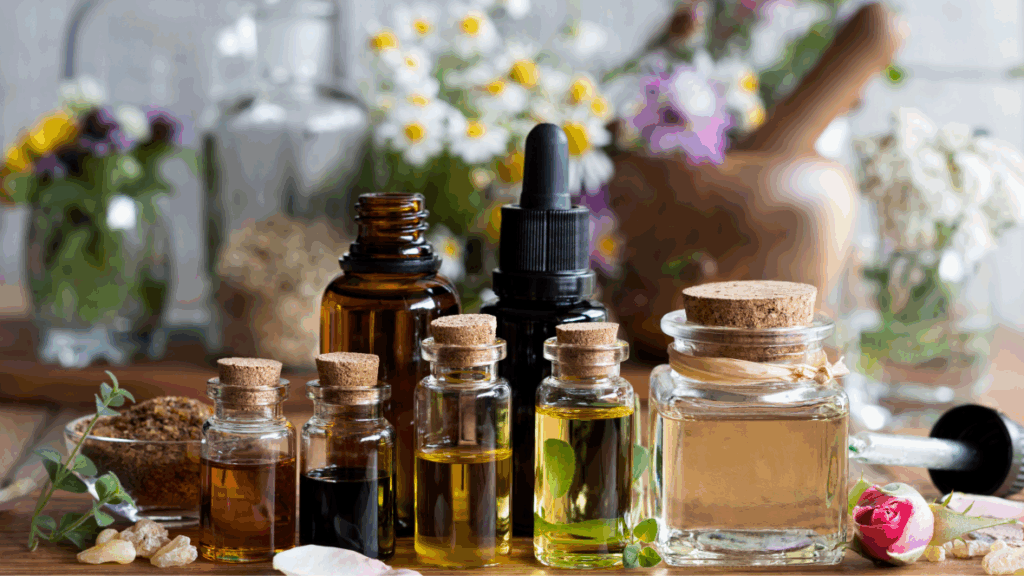
High-Quality Essential Oils: What to Look For

Essential oils are everywhere these days. You can find them in the pharmacy, the health food store, and even for sale on social media profiles. With essential oils seemingly everywhere, determining which ones are high-quality can be a challenge.
In this article, we’ll walk you through several ways to tell whether the essential oils you’re getting are high-quality.
Understanding Essential Oil Labeling
Unfortunately, there is no one way to test out essential oils. Since essential oils are made from a wide variety of plants, the chemical composition of each one is different. There are even different methods of extracting essential oils depending on the plant you’re starting with.
For example, many essential oils are extracted through a steam-distillation process, but some are extracted by cold pressing, a common method for citrus fruits.
Essential Oil Green Flags
Now that you better understand the terms that may indicate an inferior product, you should also be aware of some of the positive indicators.
Latin Name
A bottle of essential oil should state the plant’s common and Latin name. For example, a bottle that just says “chamomile” doesn’t indicate what variety of chamomile the company used. Chemical differences exist between common varieties, such as German chamomile (Matricaria chamomilla) and Roman chamomile (Chamaemelum nobile), and they also have different uses.
Extraction Method
A true essential oil should also list the extraction method on the label. Some plants can be extracted in different ways, which can change the character of the oil, so look out for the extraction method on the bottle.
Country of Origin
High-quality essential oils will often include information about where the plants used to create the oil were grown. If it’s not on the bottle, then check the brand’s website. The environment a plant was grown in can greatly affect the chemical compounds it contains, which is why certain regions are renowned for their roses, for example.
While not 100% necessary, this is another piece of information that helps you better understand the product and indicates a higher-quality product with a carefully monitored supply chain.
Use Your Senses
If you’re a newbie when it comes to essential oils, you may not trust yourself to judge the quality solely based on your senses. Over time, you can develop your ability to recognize the quality of certain oils, particularly ones you regularly use.
This skill will take time to build, so be sure to use the other recommended resources when choosing essential oils.
How to Tell if an Essential Oil Brand is High-Quality
There are a few ways you can evaluate an online essential oil brand. First, you want to choose a brand that’s been in business for a while. They should have a history of sales, preferably with repeat customers. A more established brand will also have a reliable supply chain to provide high-quality oils. If they just popped up yesterday and are selling exclusively on social media, they may not be able to provide you with high-quality oils.
You should also look at the amount of information available on their website. They should include details about where their oils come from, how they are made, and how best to use them. Brands like Wholesale Botanics give helpful profiles on all their wholesale essential oils, helping you to understand the product and build your trust in the company.
It’s also nice to see a space for customer reviews on the product pages so you can read testimonies from other people who purchased the oil you’re considering. Personal preference varies, so if there are many reviews and every single one is five-star, that can indicate that the brand is censoring reviews.
Check the brand’s policies on returns and exchanges to see if they also stand by their products. You can also send an inquiry to their customer service department to see how responsive they are to their customers. That can be an important indicator of a high-quality brand.
Be a Smart Essential Oil Shopper
Some brands take advantage of the fact that consumers don’t always know how to tell if a product is high-quality. In the case of essential oils, it can be especially puzzling, thanks to the lack of regulation. Fortunately, though, there are some ways you can protect yourself from purchasing an inferior product.
We hope this guide has given you some helpful tools for your savvy shopping arsenal. Choose a reliable brand with a long-standing history, read labels carefully, and train yourself to recognize the signs of quality. With that, you’ll be buying high-quality essential oils in no time.
For more celebrity lifestyle resources, check out Couri’s Columns.

